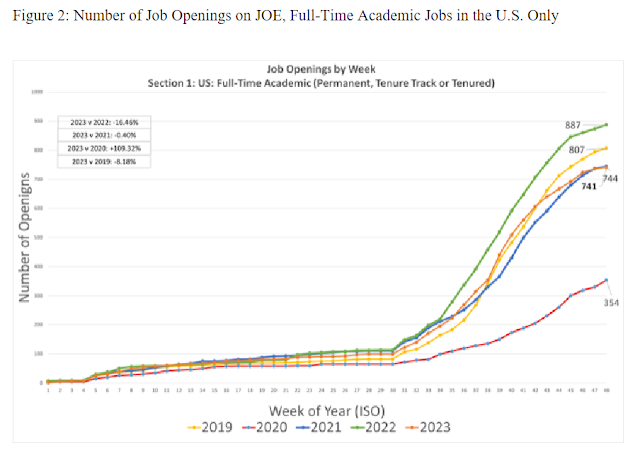Here's a paper surveying introductory economics textbooks for statements (or lack of statements) about experimental economics, over fifty years. (That's just about the period in which I've been doing experiments, since starting a long collaboration with the late Keith Murnighan when we were both new assistant professors at the U of I in 1974, although in fact the article covers 1970-2019.) Note from the figure below that textbooks lag not just the progress of science, but even its widespread recognition: Kahneman and Smith won their Nobel for experiments in 2002.
Changing perceptions about experimentation in economics: 50 years of evidence from principles textbooks, by Saileshsingh Gunessee and Tom Lane, Journal of Behavioral and Experimental Economics, Volume 107, December 2023.
"Abstract: Traditionally, economists often argued experiments play little or no useful role in our science. This paper employs a novel approach to track the historical evolution of this doctrine from 1970 to 2019, by constructing a dataset of 278 introductory economics textbooks. Quantitative and qualitative analysis shows that anti-experimental views were dominant and largely unchanged until 2000, but there has since been a trend towards textbooks making positive statements about experimentation. However, remarks that economic experiments are impossible have been (almost) eliminated only in the last decade, evidencing a sluggish change in perceptions. Supplementary interviews with key textbook authors confirm the historical trend of increased enthusiasm towards experiments, and suggest they are now accepted within the economic mainstream. Our findings hold important implications for how the empirical methodology of economics is understood by practitioners and students."
Based on the introductory chapter of each textbook, they "classified the book's position on economic experiments into one of five categories:
"1. The book's introduction states that doing experiments in economics is impossible, or that economic experiments are never done (hereafter, Impossible/Not Done).
"2. The book's introduction states that doing experiments in economics is difficult, or that economic experiments are rare (hereafter, Difficult/Rare).
"3. The book's introduction states that experiments are done in economics, or refers to economic experiments without mentioning their being rare or any difficulties involved in conducting them (hereafter, Done).
"4. The book's introduction does not mention experimentation in economics (hereafter, No Mention).9
"5. The book does not contain an introductory section (hereafter, No Intro)."







